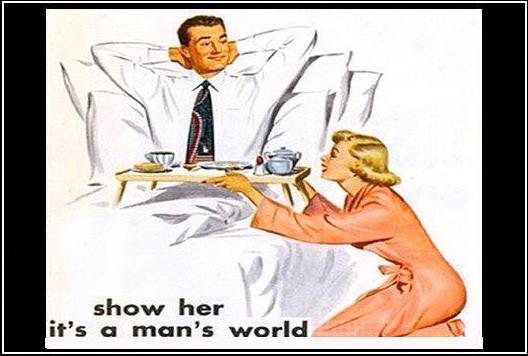The male gaze is described in media as a perspective of film created
for and by a male audience. Inside the male gaze is where you can locate
females being overly sexualized, objectified, and in other words,
dehumanized. With males dominating
essential creative roles important to American media and its production, the
male gaze is almost unavoidable. Images of women being passive, submissive, and
often naked as compared to the male counterpart are what has become the
standard, and is widely accepted and recognized in popular culture.
In John Berger’s article, “Ways of Seeing” he
acknowledges the origin of the male gaze in European oil paintings. He states,
“One might simplify this by saying: men act and women appear. Men look at
women. Women watch themselves being looked at…thus she turns herself into an
object.” Berger sheds light on the fact that women are aware they are being
watched by men and accept it. Women behave in a certain persona due to their
recognition of being watched by men.
[In this recent picture we see a fully clothed Male, posing with a posture that extends his foot towards the viewer in an approach to state his dominance, as well as his arm being around her shoulder to convey her belonging to him. We also have a female, with more revealing clothing showing almost all of her legs and arms smiling to promote happiness, while at the same time the male doesn't require or possess a smile.]
[Male gaze in full affect here]
Bell Hooks responds to Laura Mulvey’s take on the male gaze, and
coined a resistive term, “The Oppositional Gaze,” originating with black females wishing to challenge
the male gaze and elaborate the ideas of what the male gaze offered. “When most
black people in the United States first had the opportunity to look at film and
television, they did so fully aware that mass media was a system of knowledge
and power reproducing and maintaining white supremacy… it was the oppositional
black gaze that responded to these looking relations by developing independent
black cinema (117)”. In this selection, Bell Hooks designates the male gaze as
not only an issue for females, but for black women in particular, and blacks in
general.
I’ve come to recognize the influence of media
and how it’s affected my own identity. I’ve become more conscious, acquainted,
and cautious of the media I consume. It’s important to realize the motive
behind the imaging that take place with not only with gender roles in media,
but also with representations of all people in media. This is directly
associated with racial, religious, and cultural stereotypes and how they affect
society all together.
It’s important to really dissect these visuals
and get an understanding of what it is really promoting. As a result, we have
women being bombarded with images in the form of film, photography, and
advertisements being told that their way to success is through the validation
of a male. That in order to succeed one must sacrifice their own identity, and
be sexually desirable towards men in any situation.
http://www.tennessean.com/story/opinion/columnists/2015/02/07/sexualized-culture-still-views-women-pieces-meat/22992605/







